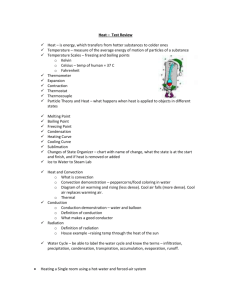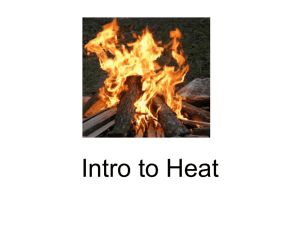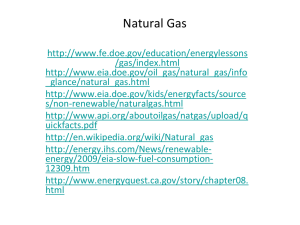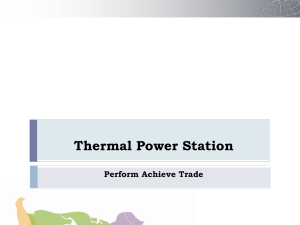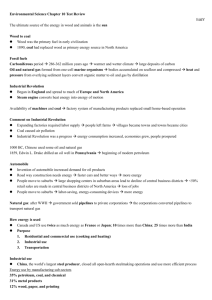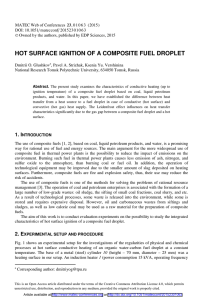A Brief History of Home Heating - Fort Thomas Independent Schools
advertisement
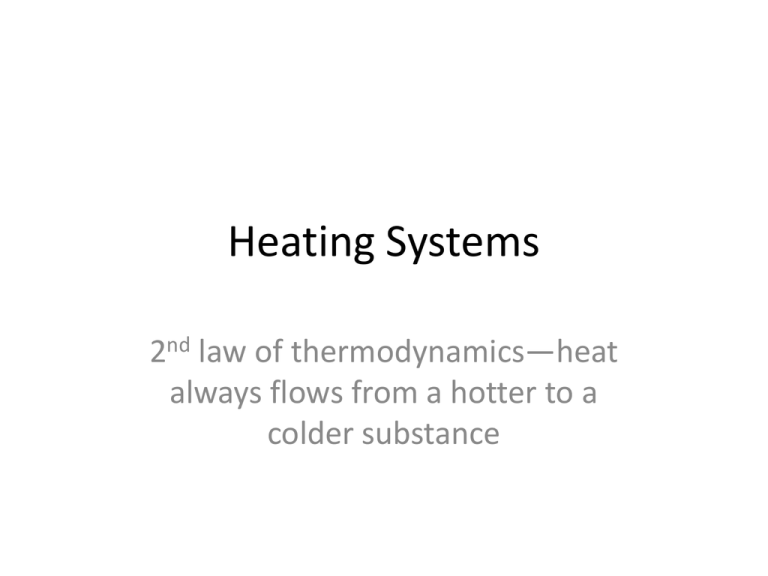
Heating Systems 2nd law of thermodynamics—heat always flows from a hotter to a colder substance Explain why the heat flow for a home is different in the winter vs. the summer. Summer– outdoor air temperature is greater than indoor air temperature (flow is from outside in) Winter—indoor temperature is greater than outdoor temperature (flow is from inside out) Commom Fuel Sources for Heating • • • • Wood Coal Oil Natural Gas (methane) Methane CH4 Pre-Mid 1700’s • Open fire • Fireplace with brick • Fuel Source: wood Mid-1700’s to 1800’s • Fireplace with brick • Franklin iron wood stove • Fuel Source: wood 1885-1900 • Coal Boiler • Natural convection (no electricity for pumps) • Fuel Source: coal 1900-1930’s • Coal Boiler • Circulated water or steam to radiators • Fuel Source: coal 1930’s • Radiant Heat and Forced Air Heating Systems • Circulated “heated” water or steam to radiators and “heated” air through ducts to registers • Fuel Source: natural gas and oil 1950’s -• Trend towards forced air heating systems to accommodate central air conditioning • Fuel Source: forced air heating(natural gas) • Air conditioning (electricity from coal) Radiant Heating System radiator Radiant energy Water-filled pipes 90 F 150 F Heat a fluid Circulate a heated fluid Burn a fuel Forced-air Heating System (can be adapted to central whole-house air conditioning) convection Heat a fluid Circulate a heated fluid Burn a fuel Convection, Conduction or Radiation? 1. Stick in campfire 2. Hot air balloon rising 3. Hot concrete surface at pool 4. Lizard sunning itself on a rock 5. Pan of soup warming on the stove 6. Foot on cold tile floor • Conduction • Convection • Radiation • Radiation • Convection • Conduction

